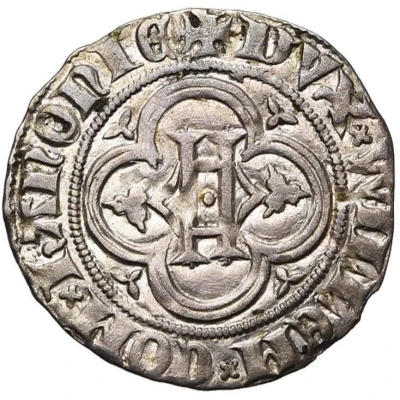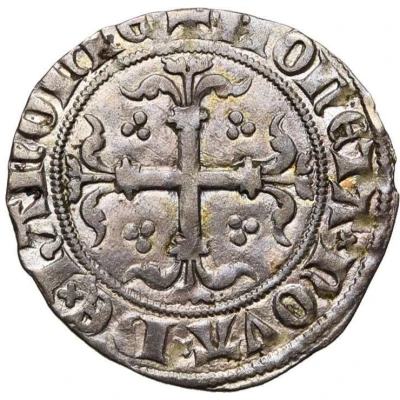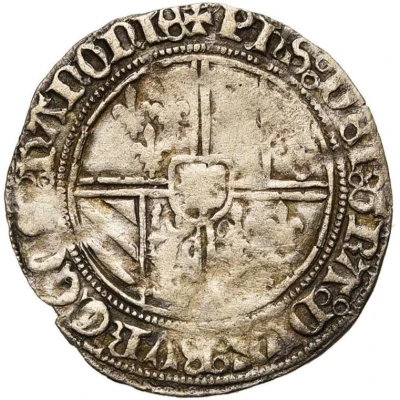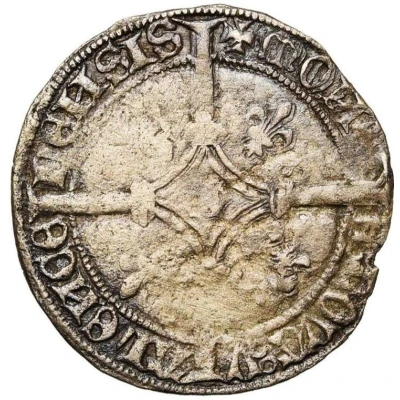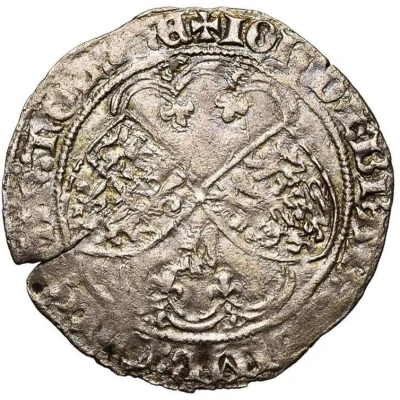
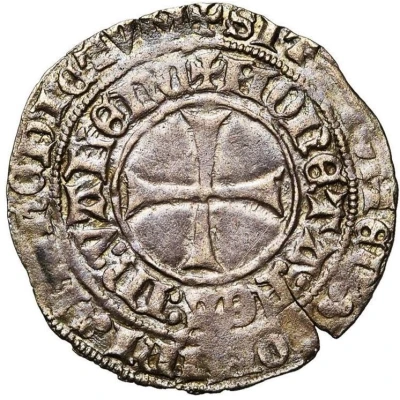

© Jean Elsen & ses Fils s.a.
Groat "Drielander" - Jacqueline and John IV of Brabant ND
| Billon (.320 silver) | 2.1 g | - |
| Issuer | County of Hainaut (French States) |
|---|---|
| Count | John of Brabant (1418-1425) |
| Type | Standard circulation coin |
| Years | 1420-1421 |
| Value | 1 Groat |
| Currency | Gros (1071-1506) |
| Composition | Billon (.320 silver) |
| Weight | 2.1 g |
| Shape | Round (irregular) |
| Technique | Hammered |
| Demonetized | Yes |
| Updated | 2024-10-04 |
| Numista | N#313839 |
|---|---|
| Rarity index | 100% |
Reverse
Short cross pattee with double legend surrounding
Script: Latin
Lettering:
(Interior): ✠MOnETA: FAC: In: VALEnC
(Exterior): ✠SIT noMEn DOMInI BEnEDICTVM
Translation:
(Interior): Coinage made in Valenciennes
(Exterior): Blessed be the name of the Lord
Comment
Jacqueline of Bavaria ascended the throne as Countess of Hainaut, Holland and Zeeland when her father (William VI) died in 1417. A succession struggle was fomented in Holland by the municipal faction, who preferred to have John III, the Prince-Bishop of Liege. This conflict came to be known as the Hook and Cod wars.In 1418, Jacqueline married John IV, Duke of Brabant. In 1420 John promulgated a monetary union between Brabant, Hainaut and Holland, with identical types to be minted in Brussels, Valenciennes and Dordrecht. These types were nicknamed "Drielander" for this monetary union. Sometimes the 2 groat coin is referred to simply as "a drielander," making the 1 groat denomination a half drielander, and so on.
The Hainaut types are identified by the lion between the shields obverse (Brabant has fleurs-de-lis) and the interior legend reverse.
Interesting fact
One interesting fact about the "Drielander" groat coin is that it was minted during a time of political turmoil in the County of Hainaut, which was part of the French States. The coin was issued by Jacqueline and John IV of Brabant, who were rival claimants to the county's throne. This coin may have been used as a tool for them to assert their authority and gain support from the local population.
